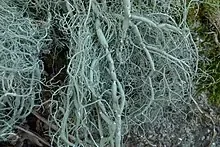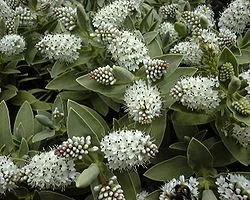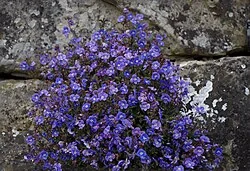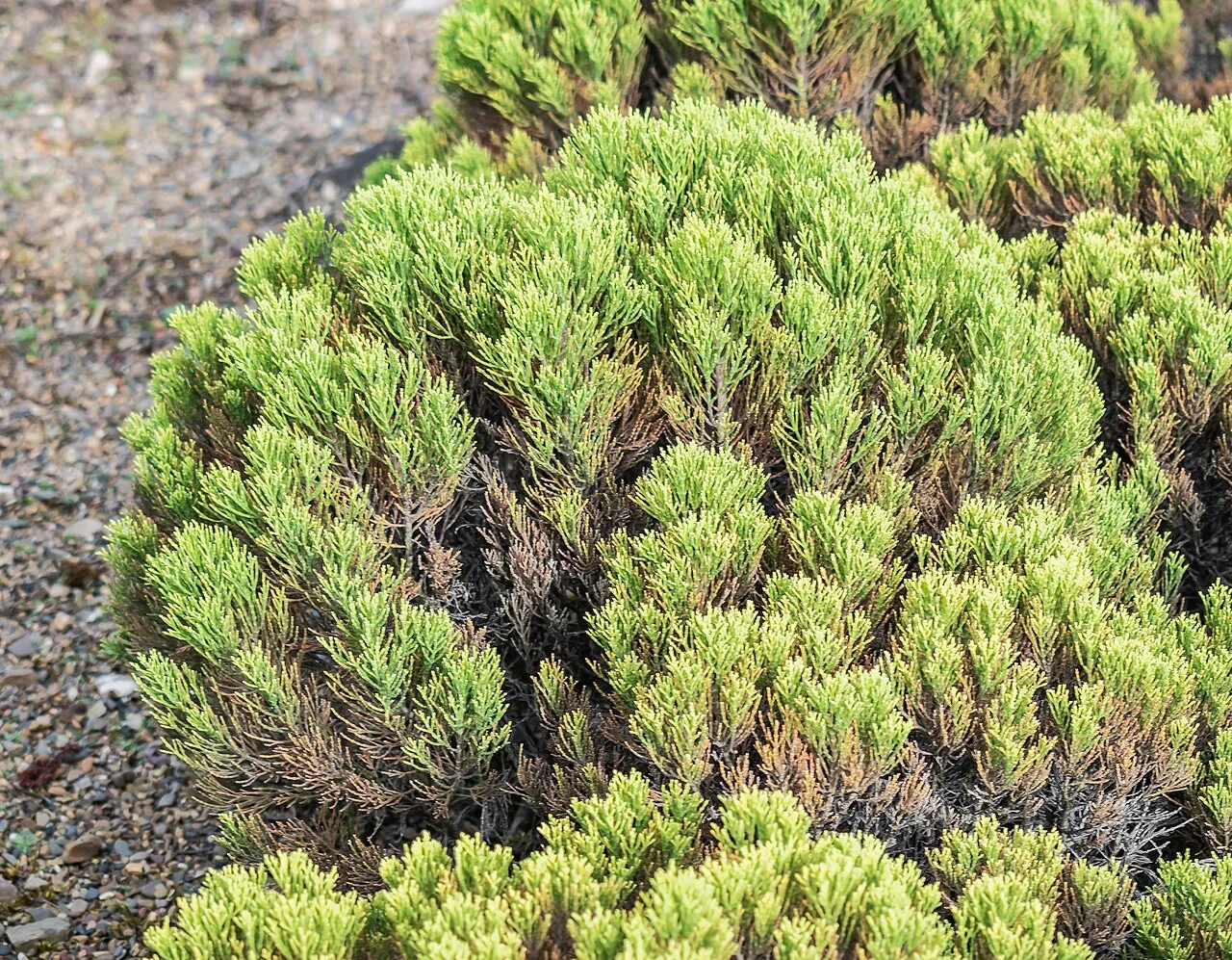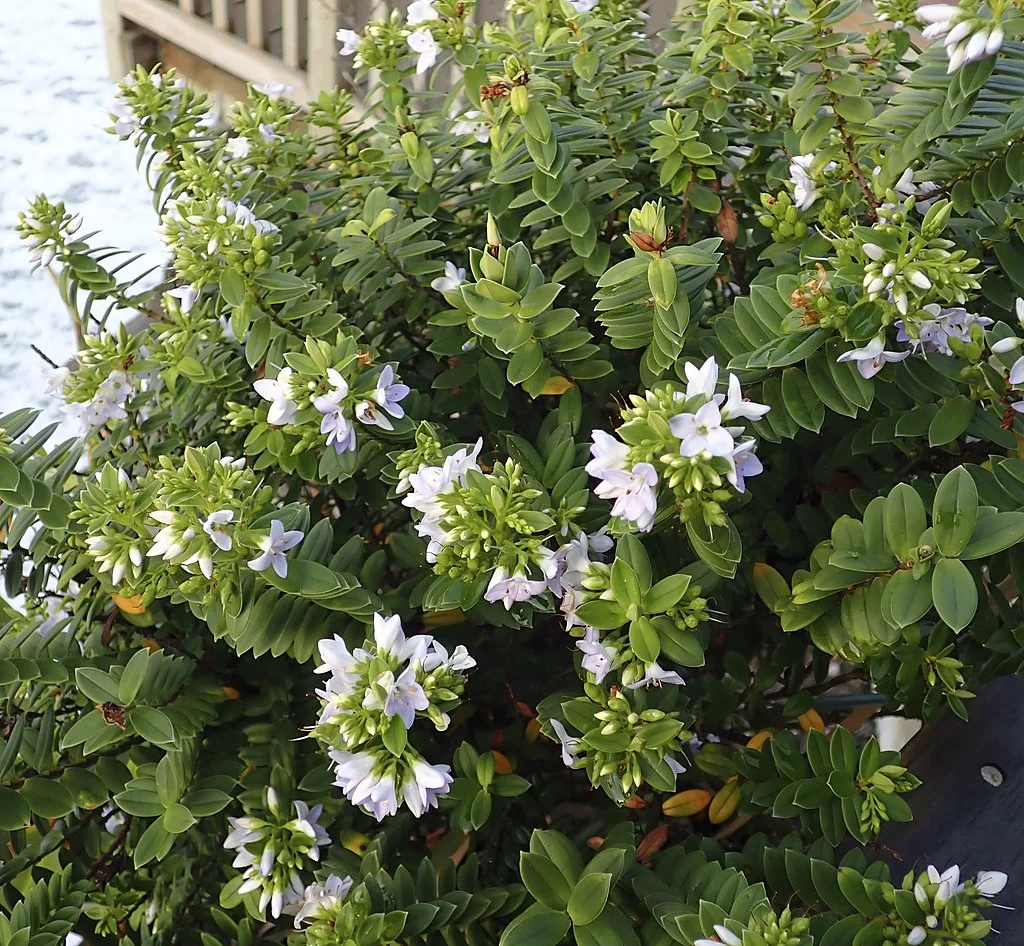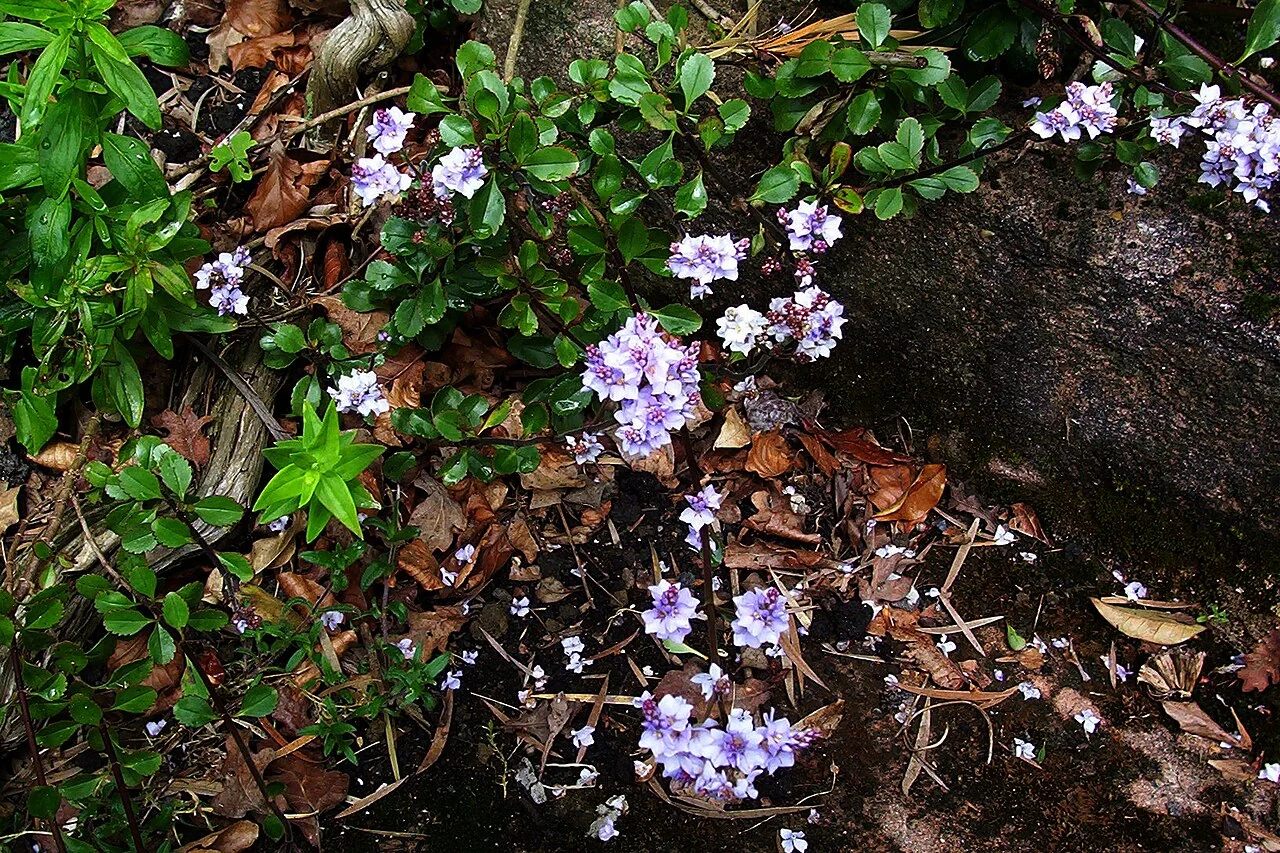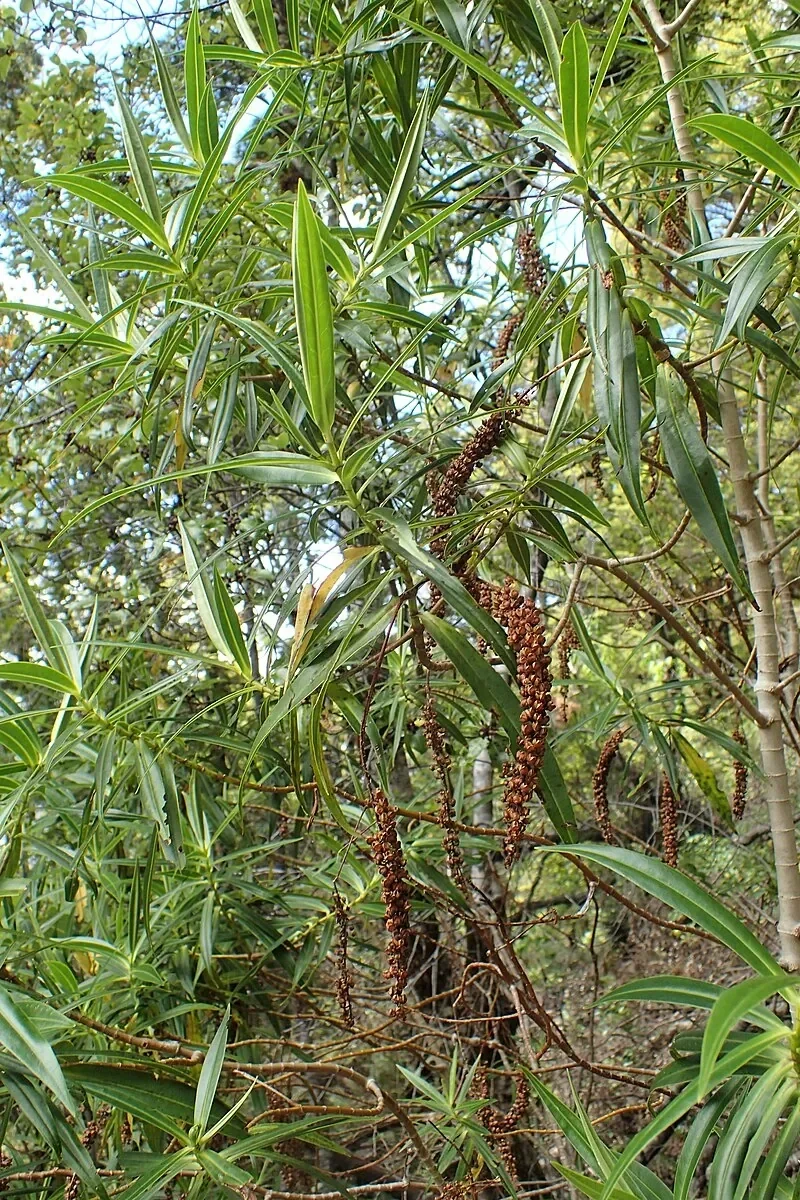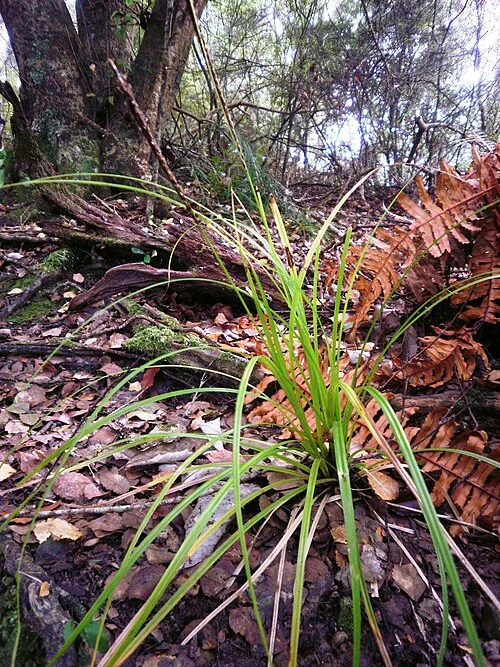
Hook Sedge
Uncinia uncinata
Introduction
Hook Sedge (scientific name: Uncinia uncinata) is a distinctive native sedge known for its striking reddish-bronze foliage that adds fiery color to the New Zealand landscape. This hardy tussock-forming plant thrives in a wide range of conditions and is valued for its ornamental qualities and ecological benefits. Found throughout New Zealand, it's an excellent choice for native gardens, providing year-round color and habitat for small wildlife. Explore more in the native plants index.

Plant Description
Botanical Features
Hook Sedge (Uncinia uncinata), commonly known as Kamu, Red Hook Sedge, or Red New Zealand sedge, is an ornamental grass-like perennial native to New Zealand. It forms compact mounds or arching tussocks of fine, grass-like foliage. The color of its leaves is a prominent feature, varying from yellow-green to dark green when grown in shade, and intensifying to reddish-brown, mahogany, or brilliant orange-red in full sun or cooler winter temperatures. Juvenile foliage often displays deeper red shades. This sedge typically grows to a height of 30 to 50 cm and a width of 30 to 75 cm. It produces inconspicuous, dark brown flowers in narrow spikes during mid to late summer, with male flowers at the top and female flowers below. It thrives in full sun to partial shade and prefers moist, well-drained, humus-rich soil. It is adaptable to various soil types, from damp to moderately dry, and is tolerant of wind and coastal conditions. Once established, it is moderately drought-tolerant but prefers consistent moisture. It is generally hardy to about -10°C, though severe frosts may require protection. The genus Uncinia is characterized by "hooks" on its fruit, which aid in seed dispersal by attaching to animals. Uncinia uncinata is particularly variable, distinguished by the number of female flowers (35-180) and the length of its spikes (55-200 mm), with typically deciduous glumes.
Quick Facts
Essential Information
| Scientific Name | Uncinia uncinata |
|---|---|
| Height | 30 - 50 cm |
| Spread | 30 - 50 cm |
| Water Needs | Moderate; prefers moist, well-drained soil |
| Light | Full sun to partial shade |
| Frost Tolerance | High |
| Salt Tolerance | Low to moderate |
| Growth Rate | Moderate |
| Lifespan | Perennial |
Climate Best Suited to
Hook Sedge is very adaptable, growing throughout New Zealand from coastal to montane areas. It thrives in temperate climates and performs best in locations with some moisture, but is tolerant of a range of conditions once established. Its best colour is often in cooler months.
Regional Suitability
| City | Climate Suitability |
|---|---|
| Whangārei | Ideal |
| Auckland | Ideal |
| Hamilton | Ideal |
| Tauranga | Ideal |
| Rotorua | Ideal |
| Gisborne | Ideal |
| New Plymouth | Ideal |
| Napier | Ideal |
| Whanganui | Ideal |
| Palmerston North | Ideal |
| Wellington | Ideal |
| Nelson | Ideal |
| Christchurch | Ideal |
| Dunedin | Ideal |
| Invercargill | Ideal |
Natural Habitat
Hook Sedge (Uncinia uncinata), also known as Kamu, Red Hook Sedge, or Red New Zealand sedge, is an ornamental grass-like perennial native to New Zealand (including the Antipodes, North, South, Stewart, Chatham, and Auckland Islands), the Society Islands, and Hawaii.
Key Habitats Include:
- Diverse Indigenous Habitats: Its natural habitat ranges from coastal areas up to 1000 meters above sea level. It is commonly found in various indigenous habitats, including dense forests, open shrublands, and sometimes on the margins of wetlands.
- Disturbed Areas: It can also be found as an urban weed in hedgerows, along river banks, or in parks, showcasing its adaptability to disturbed environments.
Preferred Conditions:
- Cool, Moist Environments: For cultivation, it thrives in cool, moist environments with well-drained, humus-rich soil.
- Light: It tolerates full sun to partial shade. Brighter conditions often intensify its foliage color, particularly in cooler climates.
- Soil: It is adaptable to various soil types, from damp to moderately dry, and prefers moist, well-drained, humus-rich soil.
The widespread distribution and adaptability of Uncinia uncinata underscore its ecological importance in contributing to the biodiversity and structural complexity of New Zealand's natural landscapes.
Plant Conservation
Uncinia uncinata, also known as Carex uncinata, is not currently considered to be at risk. In New Zealand, where it is indigenous, its conservation status has been consistently listed as 'Not Threatened' since at least 2004, including the most recent assessment in 2023. Regionally, in Otago, it was also classified as 'Regionally Not Threatened' in 2024. Globally, NatureServe Explorer lists Uncinia uncinata with a 'G5' status, indicating it is secure, though this global status was last reviewed in 1993 and is noted as needing review. In the United States, it is 'Not Ranked' (NNR), and in Hawaii, it is 'Apparently Secure' (SNR). While the species itself is not threatened, general threats to plant conservation include habitat loss, the impact of exotic plants (weeds), pest animals, collection, and climate change. Habitat loss is widely recognized as a major threat to global biodiversity.
Growing Requirements
Soil Requirements
Hook Sedge (Uncinia uncinata) thrives in moist but well-drained, humus-rich, and moderately fertile soil. It is adaptable to various soil types, including chalk, clay, loam, and sand, but moisture-retentive soil is beneficial. Good drainage is crucial to prevent waterlogging, especially in winter.
Light Requirements
Hook Sedge prefers full sun to partial shade. Full sun exposure tends to enhance the reddish and coppery coloration of the foliage, while more shade can result in greener leaves. In hotter climates or inland areas, partial shade is often recommended to prevent scorching.
Water Requirements
Regular watering is crucial, as Hook Sedge thrives in consistently moist environments without becoming waterlogged. It is well-suited for rain gardens due to its preference for damp conditions. Once established, it can tolerate some drier periods but performs best with consistent moisture.
Planting Guide
Uncinia uncinata, also known as Hook Sedge or Red New Zealand Sedge, is an evergreen perennial grass-like plant prized for its distinctive reddish-brown to mahogany foliage. It forms dense, arching tufts and can reach an ultimate height and spread of 0.1-0.5 meters (approximately 12-18 inches) within 2-5 years.
1. Light Requirements:
Uncinia uncinata thrives in full sun to partial shade. It performs best in bright conditions but can tolerate some shade, especially in hotter climates.
2. Soil Requirements:
This sedge prefers moist, but well-drained soil. It can adapt to a range of soil types including chalk, loam, and sand, and tolerates acidic, alkaline, or neutral pH levels. Humus-rich soil is ideal, but it can grow in poorer soils if drainage is good. Avoid waterlogged conditions.
3. Watering:
Keep the soil consistently moist, particularly during dry spells and while the plant is establishing. Once established, it is moderately drought-tolerant but prefers consistent moisture for optimal growth.
4. Hardiness:
Uncinia uncinata is generally hardy in mild to moderate climates. It is rated H3 in the UK (hardy in coastal and relatively mild parts, -5 to 1°C) and hardy to USDA Zone 8a (around -12.2°C or 10°F). In colder regions, it may require protection from severe frost or can be grown in a cold greenhouse.
5. Planting Time and Spacing:
The best time to plant Uncinia uncinata is in spring or autumn to allow the roots to establish well. Space plants approximately 30-45 cm (12-18 inches) apart.
6. Size:
Mature plants typically reach a height of 30-45 cm (12-18 inches) with a similar spread.
7. Maintenance:
- Mulching: Apply organic mulch in spring to help retain soil moisture and suppress weeds.
- Pruning: No specific pruning is required. Trim back any dead or damaged foliage in early spring to refresh the clump.
- Fertilization: Uncinia uncinata is easy to grow and generally doesn't require much fertilizer. A light application of a balanced slow-release fertilizer in early spring can support healthy growth and maintain foliage color.
8. Propagation:
Propagate Uncinia uncinata by division between late spring and midsummer, or in spring or autumn. Seed propagation is possible but less common.
9. Landscaping Uses:
Uncinia uncinata is highly valued for its ornamental foliage and tidy clumping form. It is excellent for mass planting, edging, rock gardens, containers, and adding contrast to mixed perennial beds. Its year-round color provides visual interest in various garden settings.
Ecological Role
Forest Floor Function
Hook sedge (Uncinia uncinata) forms tufted cover on damp forest floors and shaded banks, helping retain soil moisture and suppress weeds. The barbed utricles attach to passing birds and mammals, aiding short-distance seed dispersal through understorey corridors.
Uses and Significance
Garden and Landscaping Uses
- Ground Cover: Forms attractive, spreading clumps that can act as a colourful ground cover, especially in woodland gardens.
- Edging and Borders: Its neat, clumping habit makes it perfect for edging paths or defining garden borders.
- Container Planting: Looks great in pots and containers, where its fine texture and colour can be appreciated up close.
- Mass Planting: Planting in drifts creates a stunning sea of coppery-red foliage.
Landscaping Ideas
Shady Ground Layer
Use hook sedge as a fine-textured ground layer under shrubs and along damp paths. Combine with Blechnum and Hymenophyllum for a soft, native woodland floor.
Seasonal Care
Hook Sedge (Uncinia uncinata) is a low-maintenance native sedge that provides year-round interest with its distinctive reddish-brown foliage. Its care focuses on maintaining consistent moisture and ensuring good drainage.
Spring
- Active Growth: Spring is an active growth period for Hook Sedge. New shoots emerge, and the plant begins to fill out.
- Planting and Division: This is an ideal time for planting new specimens or dividing established clumps to propagate or manage size.
- Watering: Ensure consistent moisture in the soil as growth accelerates.
- Fertilizing: A light application of a slow-release fertilizer can be beneficial to support new growth and maintain vibrant foliage color.
- Tidying: Remove any old, dead, or discolored foliage to encourage fresh growth and maintain a tidy appearance.
Summer
- Foliage Color: The reddish-brown foliage often intensifies in color with good sun exposure.
- Watering: Maintain consistent moisture, especially during hot, dry periods. While it tolerates some dryness, it performs best with regular watering without becoming waterlogged.
- Seed Heads: The distinctive seed heads with their small hooks will develop.
Autumn
- Foliage Color: The foliage color remains vibrant, often deepening in cooler temperatures.
- Watering: Reduce watering frequency as temperatures cool and growth slows, but ensure the soil does not dry out completely.
- Seed Dispersal: Seeds will be ready for dispersal, attaching to anything that brushes past.
Winter
- Frost Tolerance: Hook Sedge is highly frost-tolerant and provides year-round color in most New Zealand climates.
- Watering: Water sparingly, only when the soil is dry to the touch, as the plant is less active during colder months.
- Tidying: Old, dead leaves can be removed to maintain a tidy appearance.
Pruning
Techniques and Timing
Hook Sedge (Uncinia uncinata) generally requires minimal pruning. Its clumping growth habit means it maintains a tidy form naturally. Pruning is primarily for aesthetic purposes and to remove old or dead foliage.
- Maintenance Pruning: To maintain its vibrant color and tidy appearance, you can comb through the plant with your fingers (wearing gloves) to remove old, dead, or discolored leaves. This helps to refresh the plant and encourage new growth.
- Rejuvenation: If the plant is looking tired or straggly, a trim back in late winter or early spring can rejuvenate it. However, this is not usually necessary for this species.
- Avoid Hard Pruning: Avoid cutting back hard during the main growing season, as this can stress the plant.
- Tools: Use clean, sharp shears or scissors if needed for tidying.
How to Grow Hook Sedge
Hook Sedge is a versatile and relatively easy-to-grow native plant, valued for its unique, colourful foliage. It is adaptable to a range of conditions, making it a popular choice for many garden styles, including rock gardens, borders, and container planting. Its vibrant red-brown leaves provide a stunning contrast against other plants, and it is particularly effective when planted in large drifts.
Division
The most common and reliable method of propagating Hook Sedge is by division. This is best carried out in spring, from late spring to mid-summer, when the plant is in a period of active growth. To divide the plant, carefully lift the entire clump from the ground and, using a sharp spade or knife, separate it into smaller sections. Each section should have a healthy portion of roots and shoots. These new divisions can be planted immediately into their final positions and should be watered well until they are established. This method ensures that the new plants are true to the parent plant's form and colour.
From Seed
Hook Sedge can also be grown from seed, although this method can be slower and the resulting plants may show some variation in foliage colour. The seeds are contained within the plant's distinctive hooked seed heads. Sow the seeds directly onto a tray of moist, well-draining seed-raising mix. Do not cover the seeds with soil, as they require light to germinate. Keep the tray in a warm, sheltered spot with a consistent temperature of around 18-21°C. Germination can take between 30 and 60 days. Once the seedlings are large enough to handle, they can be pricked out and potted into individual containers to grow on before being planted out in the garden.
Pests and Diseases
Generally Robust
This sedge is largely untroubled by pests and diseases, making it a reliable choice for many garden situations.
Cultural Significance
Uncinia uncinata, also known as Hook Sedge or matau-a-māui, holds cultural significance for Māori, who traditionally used various sedges for weaving and other practical purposes. Its distinctive hooked seeds are a unique feature.
Bonus Tip
Clip hook sedge lightly after flowering to tidy; avoid fluffy mulches that catch barbed seeds. Best colour and texture develop in evenly moist, humus-rich soils.
